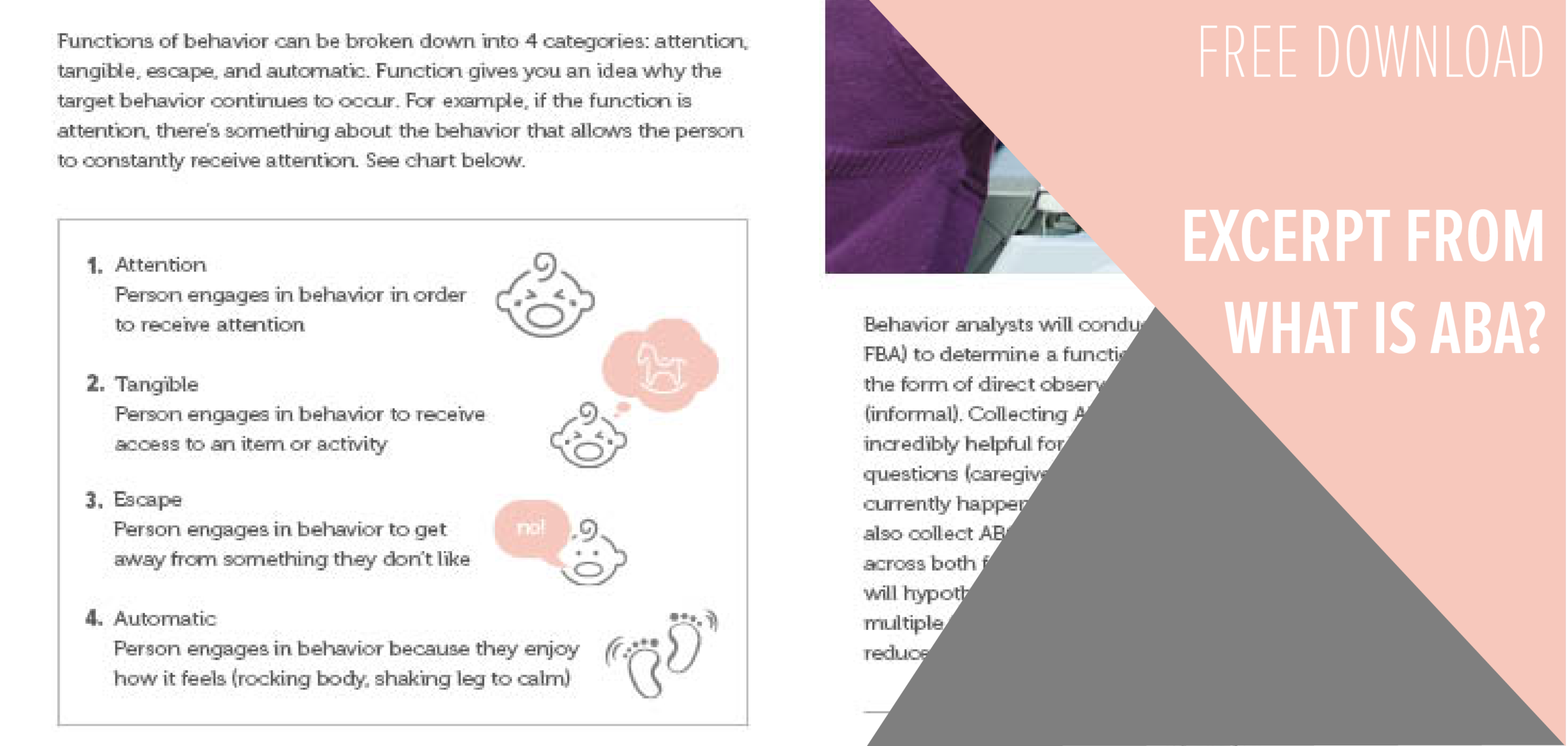Another term you will hear in ABA is to “follow through.” Following through is similar to our conversation on Ignore and Redirect.
“My advice for redirection is to follow through with a replacement behavior advised through your child's behavior intervention plan. When it comes to redirecting, I am typically looking for something specific that will go along with function.”
In ABA, we are teaching new skills and replacing unwanted behaviors by providing multiple opportunities to practice. I set the expectation that if I say something like “pick up your toys,” I expect the child to pick up their toys. They may have a fit by throwing themselves on the floor and saying “I don’t want to,” but to follow through I will go down the prompt hierarchy to figure out how we can accomplish getting those toys picked up. Here are some possible things I may do or say:
I may point to the toys and direct the child to the toy bin.
I may say, “First clean up, then we’ll go to Starbucks”
We may clean up together, taking turns.
I may bring the toy bin to the child and hand-over-hand put the toys in.
Hand-over-hand (or full physical prompt) may just be the first few toys to build momentum. Once the child gets started, they may get the hang of it and do the rest on their own (high 5!). If not, following through may look like full physical prompts the entire way. There are multiple options here to follow through. Remember, if you gave instruction or you are purposefully teaching a new skill, the task needs to be completed whether your child did it independently or you provided some assistance.
So, what if I didn’t say “pick up your toys” and said “let’s go to Starbucks” instead? Toys are still laying out on the floor. You can leave the mess and take the child to Starbucks. However, if this is a skill your child is working on, you will mostly likely need to follow through and have them clean up first.
My point is that if you tell your child to do something or you’re teaching new skills (e.g. cleaning up, requesting, you will need to “follow through” and determine how to teach your child to get from point A to point B independently. You may need to provide prompts at first, but to teach your child to be independent you will eventually need to fade your prompts.
Following through doesn’t just apply to instructions and teaching new skills. It’s also extremely important when you are working to decrease unwanted behaviors. In these situations, though, how to follow through can be tricky unless you know the function of behavior (brief example here), which, you may remember, is why a person does what they do.
Your behavior analyst (BCBA) will identify function as well as have a behavior plan in place to instruct you on how to follow through when unwanted behaviors occur. Consistency is key, so anyone who spends time with your child should follow through with the same plan. You should also strive to follow through every time the unwanted behavior occurs.
We are not perfect, and some occasions are easier to follow through than others (community outings such as grocery shopping or parking lots are really tough), but it’s important to try your best. If community outings are especially tough for you, ask your BCBA to see if they can coach you through it or even come out and demonstrate it for you. They will mostly likely find a way to simplify the plan to make it a easier. However, if you are in a comfortable place such as your home, do your very best to address the unwanted behaviors as they occur.
Following through can be tough, but it also builds trust. It’s like a promise. If you cleaned up your toys, I better be good to my word and take you to Starbucks!



